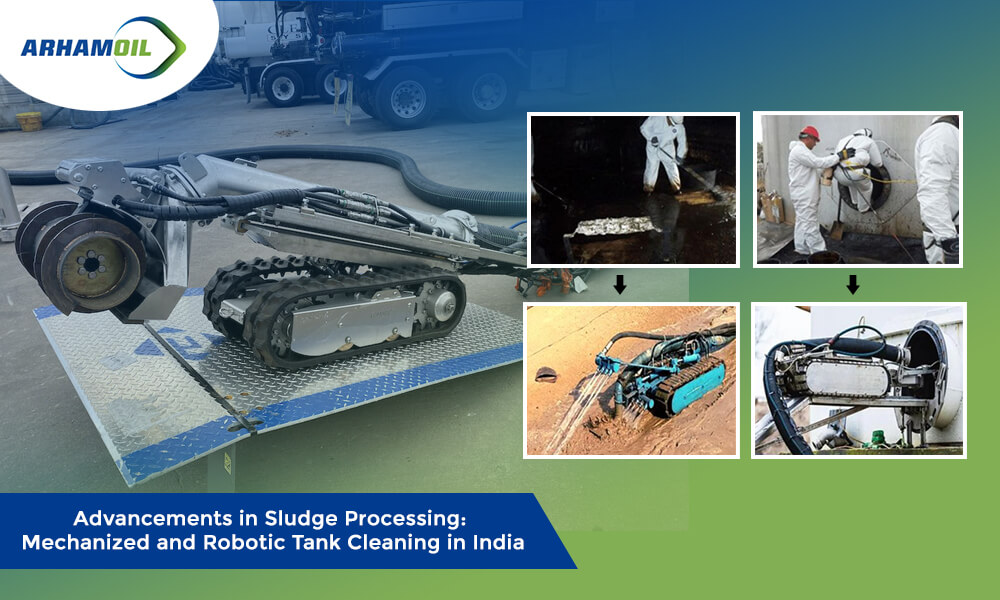The Essentials of Lagoon Cleaning: Methods, Benefits, and Innovations
April 23, 2024Maximizing Resources with Arham Oil’s Expert Oil Recovery Services
July 1, 2024In the realm of industrial maintenance, efficient sludge processing, and tank cleaning are paramount for ensuring operational integrity and environmental compliance. As industries evolve, traditional manual methods are giving way to mechanized and robotic solutions, particularly in countries like India where technological advancements are rapidly reshaping industrial landscapes.
Mechanized Tank Cleaning:
Gone are the days of labor-intensive manual cleaning processes. Mechanized tank cleaning systems have revolutionized the industry by offering faster, safer, and more thorough cleaning solutions. These systems utilize high-pressure water jets, specialized nozzles, and automated equipment to remove sludge, residues, and contaminants from tanks of various sizes and shapes.
In India, the adoption of mechanized tank cleaning has gained significant momentum across diverse sectors such as petrochemicals, pharmaceuticals, food processing, and wastewater treatment. Companies are increasingly investing in state-of-the-art equipment and trained personnel to streamline their cleaning operations while minimizing downtime and maximizing productivity.
Robotic Tank Cleaning:
As technology advances, robotic tank cleaning has emerged as the next frontier in industrial maintenance. Robotic systems offer unparalleled precision and efficiency, allowing for thorough cleaning of even the most complex tank geometries without the need for human intervention. Equipped with advanced sensors, cameras, and algorithms, these robots navigate confined spaces and hazardous environments with ease, ensuring optimal cleaning outcomes while prioritizing worker safety.
In India, the adoption of robotic tank cleaning solutions is on the rise, driven by the need for cost-effective and environmentally sustainable maintenance practices. Industries ranging from oil and gas to chemicals and utilities are embracing robotics to enhance their cleaning processes, reduce waste generation, and comply with stringent regulatory standards.
Challenges and Opportunities:
While the shift towards mechanized and robotic tank cleaning offers numerous benefits, it also presents challenges and opportunities for stakeholders. Deployment costs, technological complexities, and workforce training are some of the key challenges that need to be addressed to realize the full potential of these innovative solutions.
However, the benefits far outweigh the challenges. Enhanced efficiency, reduced operational costs, minimized environmental impact, and improved worker safety are among the compelling advantages of embracing mechanized and robotic tank cleaning technologies. Moreover, the growing demand for such solutions presents lucrative opportunities for manufacturers, service providers, and technology developers in India’s thriving industrial ecosystem.
Conclusion:
The landscape of sludge processing and tank cleaning in India is undergoing a transformational shift propelled by mechanization and robotics. By leveraging advanced technologies, industries can optimize their cleaning operations, achieve regulatory compliance, and stay ahead of the curve in an increasingly competitive market. As the nation continues to embrace innovation, mechanized and robotic tank cleaning will undoubtedly play a pivotal role in shaping the future of industrial maintenance across various sectors.


